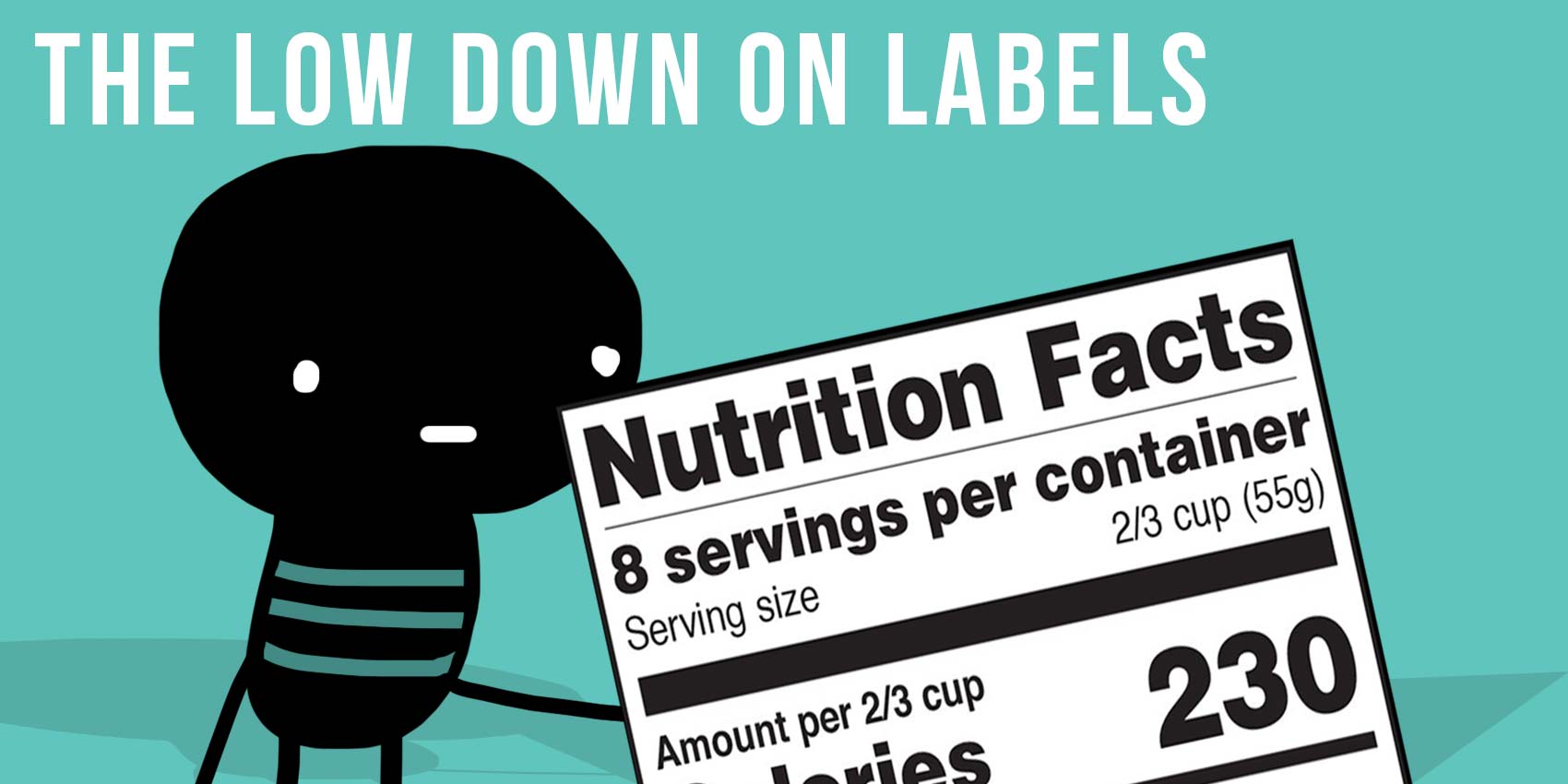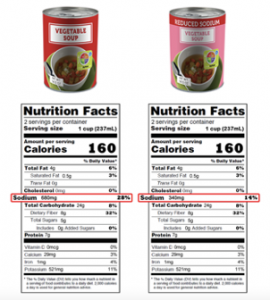30 Sep The Low down on labels

Reading labels can be confusing, so we’re giving you some pretty simple guidelines to help you “read between the lines” and make food choices that are smart.
1. READ THE INGREDIENTS!
Ingredients are listed in order of amount contained within the food/package/can/box, etc. So the first few ingredients are key since they make up most of the food. A good rule is to make sure sugar (anything ending in -ose, e.g. high fructose corn syrup, sucrose) is not in the first 5 ingredients. Besides sugar, you may need to pay attention to the sodium (salt) content and fat content—both found on the label as well. See the image here from MyPlate.gov as an example. Notice the amount of sodium is far less in the “reduced sodium” soup can.

In general, if the nutrient percentage is less than 5%, that means it is low in that nutrient, if it is greater than 20%, it is high in that nutrient. For example, 5% fat content is low, while 20% fat content would be high.

TIP! We used sodium here as an example because it is yet another food group to keep in mind. The American Heart Association recommends about 1,500 mg (that means milligrams) of sodium per day. That is less than a teaspoon. The average intake of sodium is 3,400 mg per day, mostly coming from processed foods.
(Source: https://www.healthline.com/nutrition/how-much-sodium-per-day#section5)
2. KISS…Keep It Simple Silly!
Make sure that the ingredient list is not long. The best products consist of only the food you think you are buying without additives, preservatives, and fillers. Look for foods with minimal items in the ingredients list. Quick quiz—how many ingredients are on the label of an apple?
3. Food labels are made with adults in mind!
When looking at the amount of each nutrient in the food product keep in mind that the RDA (Recommended Daily Allowance) is based on a 2,000 calorie-per-day diet for adults. Your energy usage may be more or less than that depending on how active you are. You may need more of some nutrients (e.g. calcium and iron) and less of others. Use the percentages and grams as a guideline rather than the final word.
4. Pay attention to the carb vs. fiber content.
Why? Because you do not want a product that is high in carbs and low in fiber… that would most likely be a high processed food low in nutritional value. Ideally, you want a product that is low in carbs (~5%) and high in fiber (usually given in grams – go for at least 3-5 grams per serving).
5. Nutritional information is given based on serving size.
The package may contain more than one serving so make sure you know approximately how much of each food item makes a serving. Try to choose foods that meet the MyPlate standards—fruits, vegetables, grains and protein, but low in sugar and salt.
6. If you see Partially Hydrogenated Oils or High Fructose Corn Syrup on a label, put the package down and walk away before someone gets hurt;-).
So those are 6 tips for reading labels. They help you to make healthy food choices. We also want to take a moment to talk about making healthy DRINK choices. Onto the next post!




Post Question:
What were the ingredients listed on the last food you ate?
Answer the post question here
What's being said